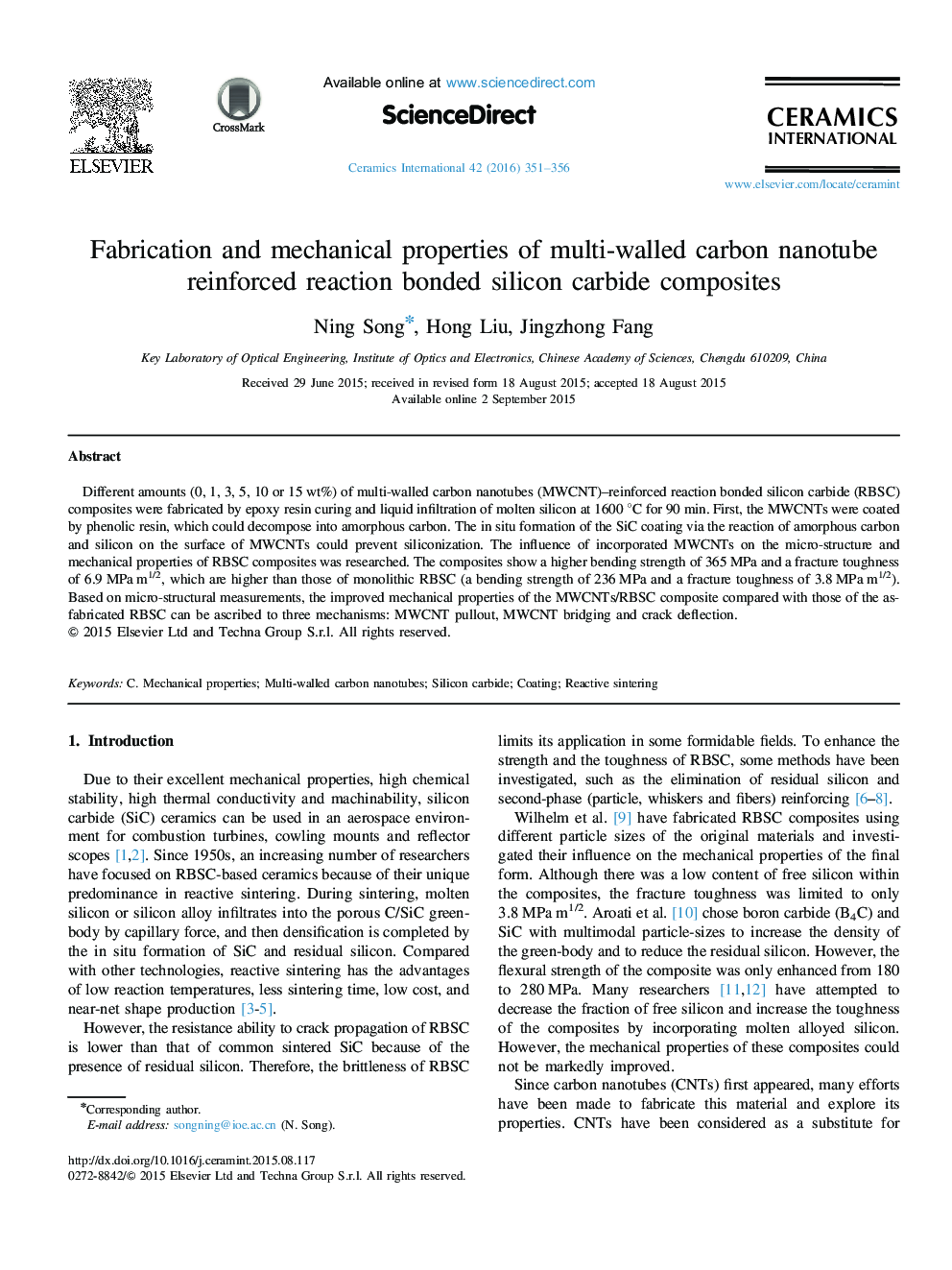| Article ID | Journal | Published Year | Pages | File Type |
|---|---|---|---|---|
| 1459439 | Ceramics International | 2016 | 6 Pages |
Different amounts (0, 1, 3, 5, 10 or 15 wt%) of multi-walled carbon nanotubes (MWCNT)–reinforced reaction bonded silicon carbide (RBSC) composites were fabricated by epoxy resin curing and liquid infiltration of molten silicon at 1600 °C for 90 min. First, the MWCNTs were coated by phenolic resin, which could decompose into amorphous carbon. The in situ formation of the SiC coating via the reaction of amorphous carbon and silicon on the surface of MWCNTs could prevent siliconization. The influence of incorporated MWCNTs on the micro-structure and mechanical properties of RBSC composites was researched. The composites show a higher bending strength of 365 MPa and a fracture toughness of 6.9 MPa m1/2, which are higher than those of monolithic RBSC (a bending strength of 236 MPa and a fracture toughness of 3.8 MPa m1/2). Based on micro-structural measurements, the improved mechanical properties of the MWCNTs/RBSC composite compared with those of the as-fabricated RBSC can be ascribed to three mechanisms: MWCNT pullout, MWCNT bridging and crack deflection.
